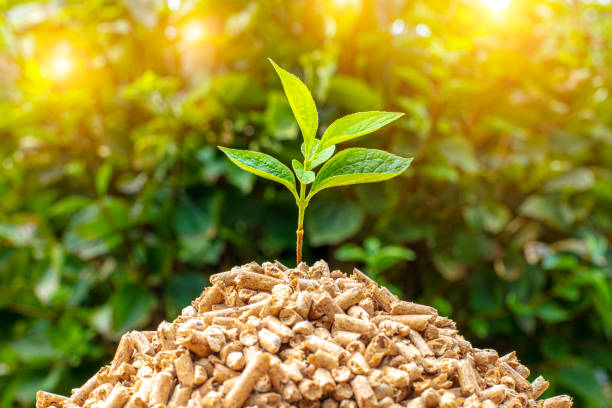
- Traditional biomass energy refers to the use of organic matter, such as wood, crop residues, and animal dung, for energy production.
- Traditional biomass is widely available in many parts of the world, however despite of the efficient use, traditional biomass has several issues.
- It is essential to transition to contemporary biomass and other clean energy sources to reduce the negative impacts of traditional biomass on health and the environment.
The word “Biomass” is often associated with a modern way to produce energy from biological materials. But did you know that biomass existed even before humans inhabited the earth? Even the use of biomass is as old as human civilization itself. Biomass is one of the most straightforward ways for humans to produce energy, one example is the use of wood to create fire. This method of using biomass is still very often used to this day by humans to produce heat. This way of biomass utilization to produce energy from organic matter is called traditional biomass, which is different from contemporary biomass, which some people might think of when they hear the word biomass. Then, what are the differences between traditional and contemporary biomass? And why do we have to start making the transition from using traditional biomass to contemporary biomass?
What is traditional biomass energy?

Traditional biomass energy refers to the use of organic matter, such as wood, crop residues, and animal dung, for energy production. It is the oldest form of energy and has been used for thousands of years. Traditional biomass is widely available in many parts of the world, particularly in rural areas where people rely on it for their daily energy needs. However, despite of the efficient use, traditional biomass has several issues, including:
- Environmental issue
Traditional biomass energy sources, such as wood and charcoal, emit large amounts of smoke and particulate matter when burned. These emissions contribute to outdoor air pollution and indoor air pollution which can contribute to the carbon emission that causes global warming. Other than that, traditional biomass energy is also a major cause of deforestation, particularly in developing countries. The use of wood for fuel contributes to the depletion of forests, which has significant environmental consequences, such as loss of biodiversity, soil erosion, and climate change.
- Sustainability issue
Traditional biomass is an unsustainable energy source, because the staple material for traditional biomass is generally firewood. This means, the use of traditional biomass on a large scale and long term cannot be realized without deforestation. Traditional biomass can be said to be unsustainable, because the supply of raw materials cannot be produced at a certain rate without causing the depletion of natural resource.
- Health issue
Traditional biomass energy can cause health hazards, particularly for women and children who spend significant amounts of time in poorly ventilated homes. Exposure to indoor air pollution can cause respiratory diseases, eye irritation, and other health problems.
Read more
- Improvement of the Indonesian Economy from the Implementation of Biomass Energy
- Bagaimana Biomassa Dapat Menjadi Penyelamat Indonesia dalam Perubahan Iklim?
What is contemporary biomass energy?

Contemporary biomass energy refers to the use of modern technologies to convert biomass feedstocks, such as agricultural residues, forestry residues, and energy crops, into energy. Contemporary biomass energy technologies are cleaner, more efficient, and sustainable compared to traditional biomass energy. Contemporary biomass energy can be produced through several processes, including combustion, gasification, pyrolysis, and anaerobic digestion. Contemporary biomass energy can be used for a variety of applications, including electricity generation, heating and cooling, transportation fuels, and industrial processes. Some examples of contemporary biomass are; biomass power plant, biogas system, and biomass stove.
Read more
- FAME : Sebuah Revolusi Hijau Biodiesel Konvensional Dalam Penelitian Airable Research oleh Dr Dylan Karis
- The Dilemma of Indonesia’s Energy Plantation Forest Development for Biomass Raw Materials
Why is it important to transition from traditional biomass to contemporary biomass?
The transition from using traditional biomass to contemporary biomass is crucial. It must be done in order to be able to provide an energy source from organic materials, but also reduce the negative impact of using traditional biomass. So that the energy produced can be used for many people in the long term. Here are some reasons why the transition must be made:
- Environmental protection
Contemporary biomass energy is cleaner and more sustainable compared to traditional biomass energy. It can contribute to the reduction of greenhouse gas emissions and protect the environment from pollution and deforestation.
- Health benefits
Contemporary biomass energy can improve indoor and outdoor air quality, reduce the risk of respiratory diseases, and promote better health outcomes.
- Economic development
The adoption of contemporary biomass energy can promote economic development and reduce poverty, particularly in rural areas where biomass feedstocks are abundant. It can also create job opportunities in the renewable energy sector.
- Energy security and sustainability
The utilization of contemporary biomass energy can enhance energy security and reduce dependence on fossil fuels. Biomass feedstocks are renewable and can provide a sustainable source of energy.
The use of biomass has accompanied humans since the beginning of civilization. Over time, the use of biomass has become more modern with the help of technological advances. Therefore it is essential to transition to modern biomass and other clean energy sources to reduce the negative impacts of traditional biomass on health and the environment. Contemporary biomass is a renewable resource that can provide energy, food, and raw materials for various industries. All parties must be involved in carrying out this energy transition, one of the things we can do is to educate ourselves about contemporary biomass and find out how this biomass is used.
#zonaebt #sebarterbarukan #ebtheroes
Editor: Himatul Azqiya
References



Comment closed